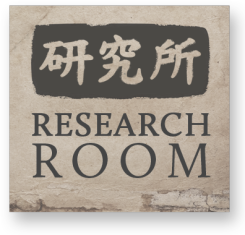Yongusil 57: BC Koh and North Korean Autonomies: Pacific Affairs Perspectives
This past December, the journal Pacific Affairs asked B.R. Myers, et al., to undertake a review of BC Koh’s classic 1965 paper “North Korea and its Quest for Autonomy.” The Yongusil considers the encounter.
Yongusil 56: Building Domain Consensus Through Narrative
The first Yongusil of 2015 encounters a reconceptualization of the bounds, nature, and possibility of “domain consensus” and its deployment in recent analysis of North Korea in the Review of Korean Studies.
The Tumen Triangle Documentation Project Goes to China: AKS Special Edition
In February 2014, Sino-NK published Warwick Morris and Jim Hoare’s reminiscences of Northeast China more than two decades ago. Just two months later and armed with a grant from the Academy of Korean Studies, our research team went to see the region as it is today. In this Special Edition of the Tumen Triangle Documentation Project, we ring the changes.
Yongusil 55: Asymmetries and Activation at the Asian Borderlands Research Network
Placing Asian and Korean border spaces in a wider context, Sino-NK reviews the recent Asian Borderland Research Network conference at the City University of Hong Kong.
Yongusil 54: Northern Parallelisms at the British Association of Korean Studies
The British Association of Korean Studies held its semi-annual conference in the defiantly industrial steel city of Sheffield recently. Sino-NK was there to encounter ruptures and parallels.
 The Research Room serves as the metaphorical “back room” of Sino-NK, visualizing the collective academic output of the organization’s members. Here readers are kept up-to-date with projects in progress and provided recaps of completed efforts. The Research Room also seeks to examine and reveal external analysis giving Sino-NK’s view of new conceptions, approaches, and methodologies. This section used to be called Yongusil, meaning “research room” in Korean.
The Research Room serves as the metaphorical “back room” of Sino-NK, visualizing the collective academic output of the organization’s members. Here readers are kept up-to-date with projects in progress and provided recaps of completed efforts. The Research Room also seeks to examine and reveal external analysis giving Sino-NK’s view of new conceptions, approaches, and methodologies. This section used to be called Yongusil, meaning “research room” in Korean.





